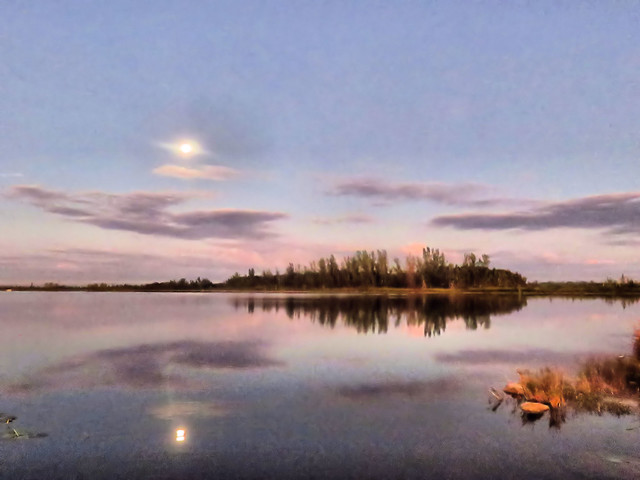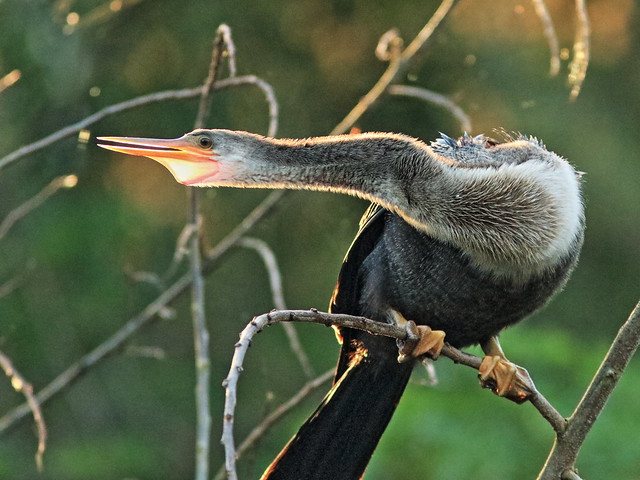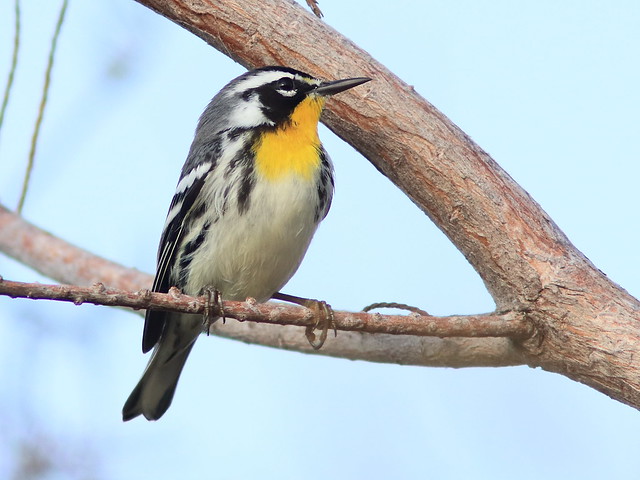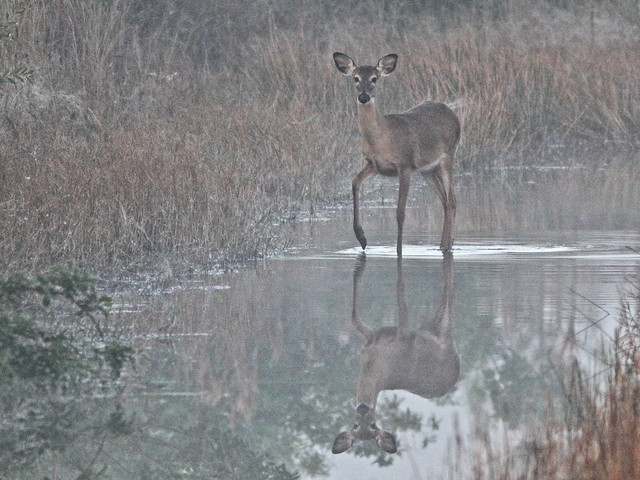Our local Bald Eagles are having their ups and downs as winter approaches. Normally the pair would reunite at the nest in late October and begin repairing the previous year's nest in early November. The nest is in particularly bad shape, as they had to raise two broods last season and it was damaged by storms which included Tropical Storm Eta.
There has been no evidence of restoration attempts since the pair were first seen together at the nest site on October 13. Not only was the nest neglected, but ground observers reported no sightings of the male (Pride) during the first two weeks of November. The female (Jewel) was often seen alone at the nest, as if waiting for Pride to start collecting nesting materials, a duty often assumed by the male.
During Pride's absence, there was a report of a possible road-killed eagle not far from the nest. It turned out that the dead bird was an Osprey, not a good thing, but hope was restored. On November 16, Pride showed up at the nest with Jewel. Although they were seen together afterward, the pair did not work on the nest and it remained in disrepair.
On November 22 an eagle was seen carrying sticks in the direction of the nest. The next day, Pride was very active carrying sticks, but he disappeared with them in the trees east of the nest. Nest watchers suspected that he was working on a new nest. This was confirmed on November 27, when two veteran watchers saw the male bringing sticks to a spot high up in a particular Australian Pine. The next day, Pride was busy indeed! A new nest was being built there, no more than a loose and small collection of sticks.
Pride flew out several times and brought back branches of various sizes:
One branch was very large and Pride made 2 or 3 unsuccessful attempts to deposit it at the nest site. He was carrying the stick at the very end, which caused it to swing wildly. He realized that he could manage it better by "stepping" along the stick to get nearer to its center of gravity and control it better:
He then succeeded and the pair spent time at the nest. It is very difficult to see the nest as it is obscured by the dense clumps of Australian Pine leaves ("needles" which are actually thin branches with tiny scale-like leaflets).
We never found evidence that any repairs had taken place at the original nest. We are concerned that there seem to be no large supporting branches for the new nest and it will require a feat of engineering to ever establish a strong foundation. This was probably why Pride was bringing in such a large branch.
Jewel also flew out to search for construction materials:
She is larger than Pride and spectacular in flight:
Aside from her size, there are other subtle ways to distinguish her from Pride. The corner of her larger beak (gape) extends back at least halfway under her eye and her tail feathers are cleaner and less worn than those of Pride. She presently has not finished growing a new feather tor the 5th "finger" at the tip of her left wing, counting in from the wingtip. Eagles normally have 10 long primary feathers. The gap will be noticeable for several more days:
It is not unusual for eagles to have more than one nest in their territory, but it is likely that the old nest has become unattractive for this pair. Eagles prefer to nest in the highest trees which are easier to access and provide the best view of their surroundings.
The old nest initially met those needs but has now been hemmed in by dense Melaleucas and other tall pines. They no longer have a clear flight path for all wind conditions. Their long wings limit their ability to maneuver— like an airliner trying to land on a football field.
The new nest, located along the same road about 75 yards (~70 meters) east of the old one, is considerably higher in another Australian Pine. It seems poorly supported by slender branches rather than a substantial fork. Native pines are often flat on top and provide a more stable platform for the nest. The power line in the foreground is about the same height as the old nest:
Interestingly, the pair has continued to visit the old nest and were even seen bringing some branches to that location. In any event, they are getting a slow start to the 2020-21 breeding season, as they usually lay their eggs by mid to late December.
On the home front, a Wood Stork appeared at our back yard lake, an increasingly rare event. In recent years, poor water conditions and loss of nesting habitat have driven them to nest further to our north. The bird flew off and we did not see it again:
Egyptian Geese "photobombed" the stork as it posed for the camera:
A troop of White Ibises foraged along our lake:
A Florida Soft-shell Turtle sunbathed on our lawn:
An ominous sunrise as seen from our back patio:
At a nearby park, a male Green Iguana had changed into his breeding coloration:
= = = = = = = = = = = = = = =
Linking to:
Fences Around the World
Nature Thursday
Skywatch Friday
Weekend Reflections
Saturday's Critters
BirdD'Pot
Camera Critters
All Seasons
Wordless Wednesday (on Tuesday)
Natasha Musing
Our World Tuesday
Please visit the links to all these posts to see some excellent photos on display
________________________________________________













































